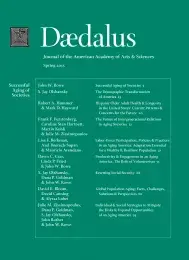Productivity & Engagement in an Aging America: The Role of Volunteerism
Volunteering in late life is associated with health benefits such as reduced risk of hypertension, improved self-related health and well-being, delayed physical disability, enhanced cognition, and lower mortality. Although the mechanisms of these correlations are not clear, increases in physical activity, cognitive engagement, and social interactions likely play contributing roles. Volunteers are typically thought to represent a select group, often possessing higher levels of education and income, good health, and strong social networks. However, group evidence indicates that there are many members of groups of lower socioeconomic status (SES), including elderly adults, who serve their communities on a regular basis and in high-priority programs. We propose that the impact of volunteering in an aging population be recognized and invested into, and that effective programs harness social capital of older adults to address critical societal needs and also improve the well-being of older adults. While members of low-SES groups are less likely to volunteer, they exhibit disproportionately great benefits. The Experience Corps represents a model of an effective volunteerism program, in which elders work with young schoolchildren. Existing federal initiatives, including the Foster Grandparent Program and Senior Companion Program – which target low-income elders – have had low participation with long waiting lists. Given the proven benefits and relatively low proportion of older persons who volunteer, enhancement of elder volunteerism presents a significant opportunity for health promotion and deserves consideration as a national public health priority.
Recent and expected future increases in life expectancy and the increasing proportion of our population that will be elderly has stimulated substantial research into the factors that promote well-being and health in late life. Early research on aging was concerned primarily with understanding the average or usual physiologic and psychological changes associated with aging, particularly in the context of inevitable loss and decline as part of senescence. The first White House Conference on Aging in 1961, however, reoriented gerontological research to provide information that facilitates good societal and individual choices associated with positive aging outcomes.1 More than twenty-five years later, John Rowe and gerontologist Robert Kahn–working as part of the MacArthur Foundation Research Network on an Aging Society–sought to advance discussions about successful aging to enhance our understanding of the mechanisms involved.2 They proposed that successful aging should reflect the distinction between two non-pathologic forms of aging–usual and successful–and called for research investigating the factors underlying the heterogeneity among older people. Following a decade of systematic studies in this area, the MacArthur Network laid out three critical factors to successful aging: 1) avoidance of disease and disability; 2) maintenance of high cognitive and physical function; and 3) engagement with life.3 . . .
Access the full volume here.
